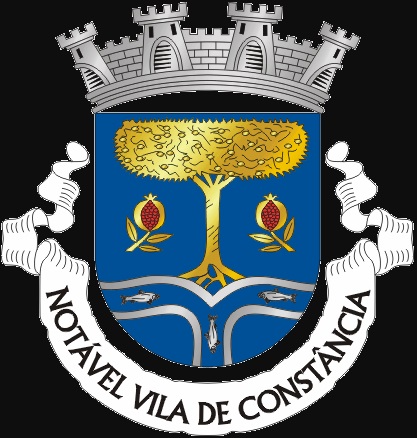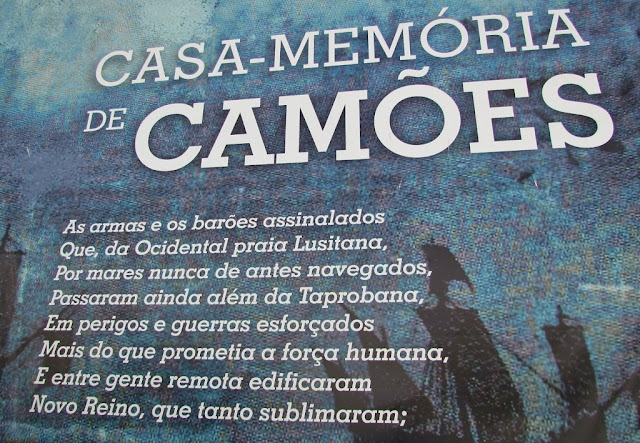CONSTÂNCIA
GPS: N 39.47698; W 8.33740
Constância is a Portuguese village belonging to the district of Santarém, in the province of Ribatejo, a region of the Center and sub-region of the Middle Tejo, with about 900 inhabitants.
It is the seat of a small municipality with an area of 80.37 km² and 4,056 inhabitants (2011), subdivided into 3 parishes. The municipality is limited to the north, east, and south by the municipality of Abrantes and to the west by Vila Nova da Barquinha and Chamusca.
As a result of the excellent natural resources, in which the municipality is very rich, Constância has a range of Active Tourism activities aimed at different segments of the population. The municipality of Constância, which has an excellent historical, cultural, landscape and geographic heritage, occupying a pivotal position between the capital, Alentejo, and Beira presents itself as a space for territorial, environmental, and tourist promotion for the leisure activities developed by land, air, and water, which it has to offer you throughout the year.
At the meeting point between the Tagus River and the Zêzere River, it was logical to have grown a village. And men did it, over the generations. Seen from a distance, the village is a vine of white houses, climbing the hill.
Conquered from the Moors in 1150, during the French Invasions, it was deeply vandalized. It would later be recovered, preserving today many points of rare scenic, architectural and archaeological beauty.
The Church of Nossa Senhora dos Mártires, Pelourinho, the Church of Misericórdia, the Jardim-Horto de Camões, the Torre do Relógio and the Chapel of Sant'Ana are just a few elements of the heritage of this beautiful village that it keeps within its small pieces of our history, which give rise to magnificent tourist routes. From a towering position, the Mother Church lurks. Built from an initial chapel in the second half of the 16th century, it boasts a ceiling painted by José Malhoa in 1898. From the top to the Tagus it is as if we were walking through a nativity scene, full of life.
At the top of Santa Bárbara is the Ciência Viva Center - Parque de Astronomia, an infrastructure that constitutes an invitation to participate in activities based on astronomy and other scientific areas. Its planetarium does the marvel of letting us see the sky as if we were somewhere else or living in another time. And to unveil our own sky, in case the clouds prevent us from seeing it from the street. A solar observatory lets us look at the sun face to face. And then there are dozens of other pieces of equipment, mostly outdoors, that allow us to travel across the sky, enjoy the harmony of the world's great machine and get a sense of how great human knowledge is, the universe is gigantic and the Earth is minuscule. that we live.
On the north bank of the Tagus River extends Montalvo, where the Convent of Nossa Senhora da Boa Esperança is located, inhabited by a community of Poor Clares, and the Mother Church of Nossa Senhora da Assunção, from the 18th century.
To the south is Santa Margarida da Coutada. Its 16th century Mother Church keeps an imposing stone image of the 16th century Santíssima Trindade, of great artistic value. It is also in this parish that the Parque Ambiental de Santa Margarida is located, a playful-pedagogical space with about six hectares that provides visitors with contact with nature, being able to enjoy leisure moments, and having information and activities related to the environment. Any visitor can simply enjoy the space individually or in contact with family and friends, or perform activities integrated into environmental education programs or thematic visits. The Park integrates a set of equipment where the Tropical Butterfly stands out. It is a space created to show the world of butterflies, contributing to the knowledge of the biology and ecology of these insects and serving as a model to understand the importance of conserving the diversity of living beings.
It is also the land of poets. Tradition guarantees that Camões lived here. Casa dos Arcos is closely linked to its memory. Vasco de Lima Couto and Alexandre O’Neill are still very much alive in the collective memory. They will have had reasons to choose Constância and they will bequeath the best of themselves.
A haven for poets and kings, Constância remains open to those who arrive today, ready to offer themselves to those who seek calm, natural beauty, the richness of heritage, evasion in a poetic environment. Nature has made this place a meeting place. Of rivers and men. Those who are proud to live here and those who discover the pleasure of coming to enjoy it.
💓💓💓💓💓
SEARCH IN ALPHABETICAL ORDER
IN THE DISTRICT OF SANTARÉM















































































